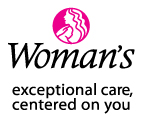The following post was written by Woman’s Nutritional Services.
These tips should be followed by everyone, regardless of their medical status, but they’re especially important for patients undergoing cancer treatment, which can weaken the immune system and make infections more likely to develop.
Avoid cross-contamination
Pathogens can be easily transmitted from one food or food contact surface to another. To prevent cross-contamination,
- Prepare raw meat and poultry in areas separate from produce and other ready-to-eat foods.
- Clean and sanitize all counters, equipment and utensils before preparing food.
- Once you have used a towel to wipe a food spill, you should not reuse it for any other purpose; put it in the laundry.
- Wash your hands thoroughly between tasks.
Store and thaw your food the right way
- Wrap or cover food before you store it.
- Store ready-to-eat food above raw seafood, meat and poultry in the refrigerator.
- Frozen meat and poultry should only be thawed in the refrigerator or under running cold water; NEVER thaw meat at room temperature.
Check your temperatures
- It is important to use a food thermometer to ensure the proper internal temperature has been reached: vegetables, 135°F; eggs, 145°F; casseroles, 165°F; beef, pork, lamb and fish, 145°F; ground meat, 155°F.
- When using a food thermometer, insert it into the thickest part of the food and wait until the thermometer reading stays steady before acknowledging the temperature. If the proper temperature is not met, continue cooking until it is reached.
- Be sure that the thermometer is not touching a bone in meat products or possibly the pan or plate that the food item is on. Your reading will not be accurate.
